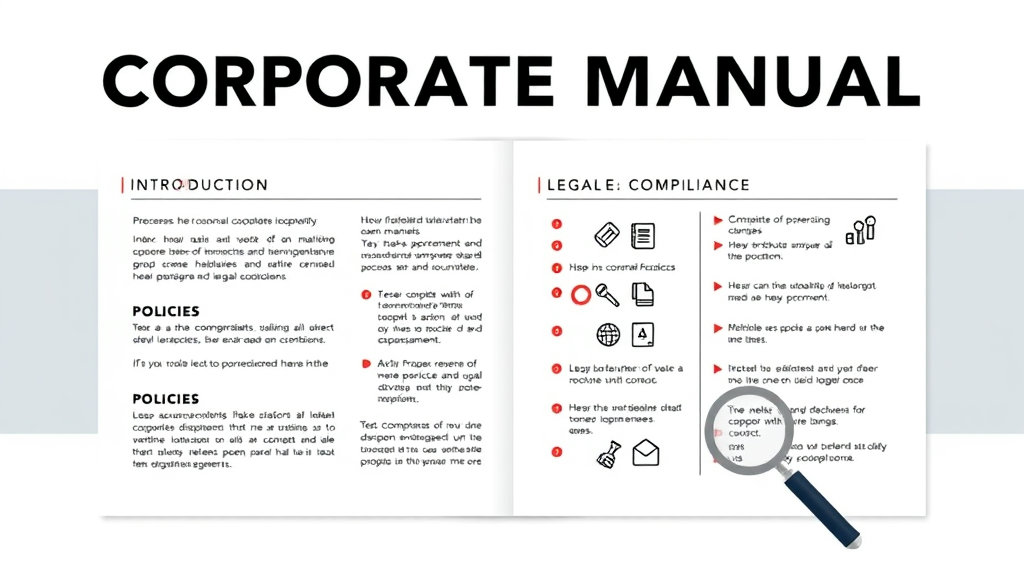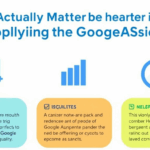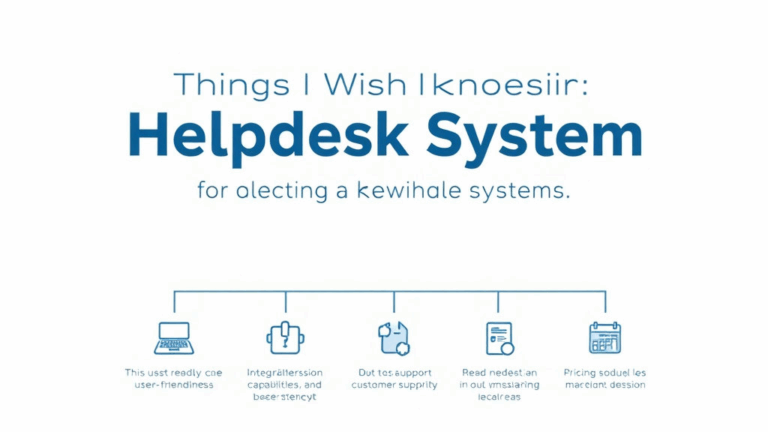Practical Flaws in Employee Handbook Templates for Legal Use
Templated Handbooks and the “Borrowed Boilerplate” Trap
Most employee handbook templates floating around — even the paid ones — feel Frankenstein’d together by someone who last checked their employment law notes in 2016. I’ve reviewed at least eight different templates in the last two years while helping clients standardize onboarding. None of them matched even the basic legal posture needed for California, much less something with remote workers in Vermont or Texas.
The real kicker? I once copied a free handbook template for a startup client in Oregon, changed maybe four policy names, and the rest was untouched. A month later, their legal counsel flagged the PTO policy as being written for exempt employees in Florida. They didn’t even operate in Florida. The template had a clause about “accrual reset on January 1 per state minimum,” which isn’t enforceable in Oregon the way that’s written.
It was a real wake-up: you can’t just tweak the tone and pretend the rest will hold up under audit or wrongful termination defense.
Legal Quirks People Constantly Miss in Templates
Here’s what I keep seeing in these templates that make my skin crawl.
- At-will employment language without a supporting arbitration clause — which makes the whole clause feel legally hollow in any real dispute
- No reference to conflicting federal/state leave laws. ADA vs. FMLA vs. local ordinances — it’s just brushed over with “we provide compliant leaves” like that clears it
- Overly specific “conduct” rules that read like middle school rules (“no horseplay”) and invite litigation from ambiguous enforcement
- California-specific disclaimers used in companies based in Ohio or Utah — apparently lifted from big tech templates
- Misclassification of remote contractors as hourly employees in the behavioral expectations section
- Non-compete references where they’re outright banned for that role under new state legislation
I saw one using a health policy that quoted an ACA statute line that had actually been repealed in 2021 after a state-level override — how’s that for outdated?
Version Control Is Weirdly Broken for Handbooks
If you’re trying to maintain a current legal handbook version in Notion, Confluence, or even just Google Docs, fair warning: nobody is timestamping edits properly.
Two years ago, I helped clean up a handbook where HR had pushed edits live directly in the master doc without labeling them — and after a policy change on digital surveillance. For three weeks, employees were signing off on two different clauses for internet monitoring, one of which explicitly allowed keystroke logs — even after we’d pulled the vendor.
Don’t rely on Google Docs “version history” alone
It can’t distinguish between policy corrections and formatting. You’ll scroll through fifteen entries wondering when HR updated the discipline rubric, and it turns out it was buried under a comment thread from caffeine-deprived Legal.
The quick fix? I moved one company entirely to GitHub Private Repos. Yep, GitHub for policies. With Markdown formatting. Every change was a commit. Every discussion was a pull request. The audit trail suddenly: checkable. If that sounds like overkill… it absolutely is. But a wrongful termination case makes you allergic to ambiguity real fast.
Non-Obvious Edge Cases in Remote Work Policies
This one had me at 2 a.m., skimming through state tax websites and regretting every career decision.
An employee handbook for a 20-person company included a pretty standard “remote work policy” section pulled from a template. Seemed harmless. Except one of the clauses referenced equipment stipends being exempt from state contributions if the employee was operating in a jurisdiction without mandatory labor support tax.
That doesn’t exist. There is no one-size-fits-all exemption. But worse: that exact phrasing triggered an audit when the company submitted payroll reports, because multiple employees expensed smartphones and data plans — and treated reimbursement as tax deductible business equipment under local rules that don’t recognize stipends the same way salary is treated.
So yeah, remote expense policies can and will trigger state tax flags.
“I found your handbook’s reference to Telecommuter Stipend Exemptions unusual. Please provide your authorization basis.” — excerpt from a state labor email that ruined my Friday morning.
We had to issue explanations, amend W-2 forms, and literally reword the handbook to say “Equipment and communication expense reimbursements will be issued in accordance with applicable federal and state law. Eligibility subject to accounting and HR review.” That was enough to make Finance breathe again.
Signature Collection May Not Be Legally Binding
Not every digital signature is made equal. And bonding handbook acceptance to it? That’s dicey.
Adobe Sign and DocuSign both work great for signature validity in contracts. But with employee handbooks, some states (looking at you, Illinois and New York) require that the employee be “aware and shown evidence of acknowledgment” for specific clauses like arbitration, surveillance consent, or BYOD behavior rules.
If all you did was send a PDF with a signature block titled “I agree to the contents”, that may not hold up for the specific parts that require consent under state law. And if you’ve never personally watched someone fast-click Sign without reading a line, bless your innocence. As soon as someone challenges it in court? It’ll fall apart unless your clause-by-clause consent design is bulletproof.
Access Revocation Timing Is Poorly Documented
This one gets overlooked in every single template I’ve reviewed: there’s little to no language around revoking access and internal credentials on termination or administrative leave. Sometimes there’s a throwaway line like “Access will be suspended same-day” — which is fine until you realize Azure AD sync lag can delay revocation propagation by 20+ minutes depending on settings.
A client of mine had an outbound contractor who uploaded their entire Jira project backlog to a personal Google Drive within ten minutes of being let go. Their G Suite account was supposedly deactivated — but oh look, Google Workspace had a mobile app session still authenticated and didn’t force logout when the account was suspended because a session was maintained on a device ID whitelist.
Not in the handbook anywhere. Nothing about offboarding procedure. Nothing about conditional session termination. That lapse cost them an NDA breach investigation and two weeks of compliance notes. All because “session persistence” wasn’t considered in the handbook language.
The “Expectations” Section Is a Legal Minefield
Paragraphs like: “Employees must maintain a positive and respectful demeanor at all times” sound fine in Canva templates. But courts hate that stuff. Behavioral expectations must be measurable, and wildly interpretive language invites disputes where suddenly everything’s considered defamation, discrimination, or unjust discipline.
Real example: a line like “Office attire must not draw undue attention or distract others.” That lead-in resulted in a gender discrimination complaint when a supervisor cited a female employee’s “distracting shoes” during a corrective feedback session. It wouldn’t have happened if the dress code had phrased standards in concrete terms (“closed-toe shoes in labs” / “no offensive slogans”), not interpretation traps like “undue attention.”
I now gently shred every handbook that tries to put subjective human behavior into rigid bullet points. If it can’t be enforced without screen-recording someone’s soul, drop it.
ADA Compliance Sections Are Often Incomplete or Misleading
Nobody likes writing accommodation policy language. So they either don’t… or grab a clause like “Employees with conditions may request accommodations by notifying HR.” That’s legally insufficient. You have to show a procedure, not just a vague avenue.
I once asked an HR head to show me their internal workflow after a disability accommodation request. Crickets. Turns out, they’d never had one — so they never set up an intake form or guidance doc. Since the handbook didn’t explain the process, an employee had reported a manager’s non-responsiveness as discriminatory — and we had nothing to show for what the process was supposed to be. Not even a standard delay window.
Final note: there’s also no mention in most handbooks about what happens when an ADA accommodation conflicts with essential job duties (e.g., nighttime driving, heavy lifting). Without that clause, it looks like you deny accommodations arbitrarily.
One phrase that saved me during a call with a plaintiff-side attorney:
“All reasonable accommodations will be evaluated in consultation with medical documentation, essential job functions, and feasibility under business necessity.”
Use it. Or tweak it responsibly.
HR Tools Export Badly Formatted PDFs
So this is more of a rant but holy hell — some HR platforms (I’m glaring at you, BambooHR and Namely) export handbooks in PDFs that absolutely butcher the styling. Alignment’s off, headers get flattened, bullet lists collapse into unreadable walls of text. I once reviewed a handbook where the harassment section header was stuck in the middle of a line about parking policy because the export engine used some janky WYSIWYG-to-PDF converter inside an iframe.
That led to one team member literally missing entire eligibility language around pregnancy leave — because visually it looked like the paragraph had ended after “Employees may request parental leave in accordance with…” and the rest was jammed into a footer line. We didn’t catch it for six months, until someone copied that chunk into a training deck and realized the sentence cut off.
Don’t trust the preview. Test a print/export round trip once per quarter and read it like someone documenting a settlement dispute.














